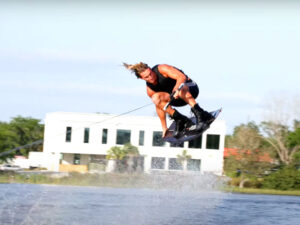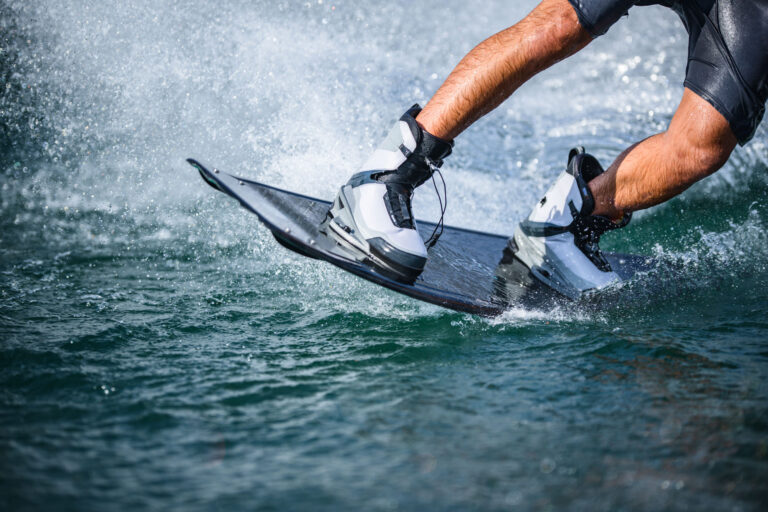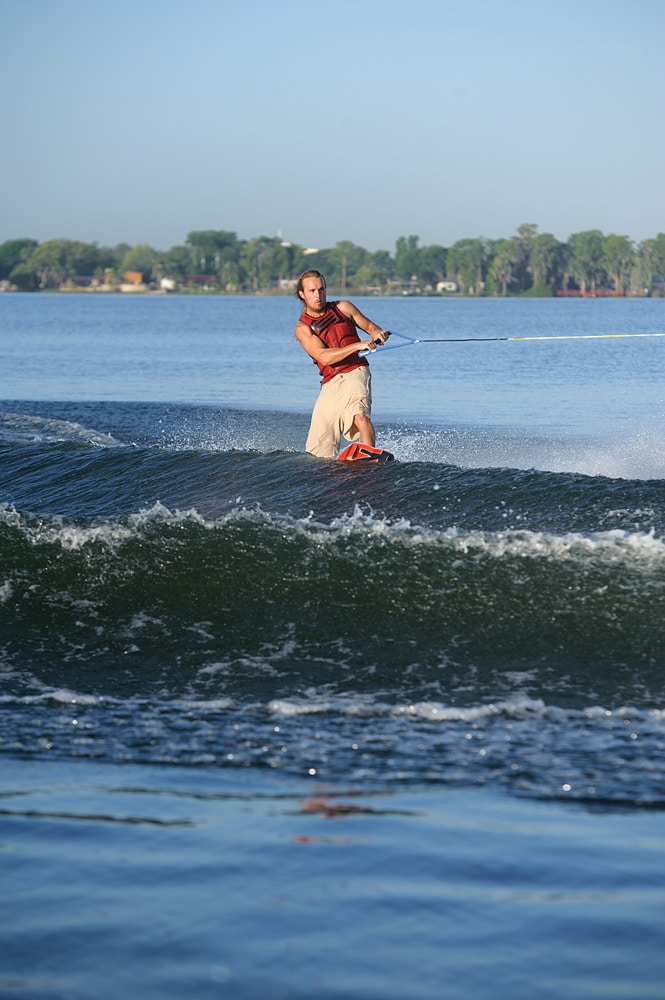
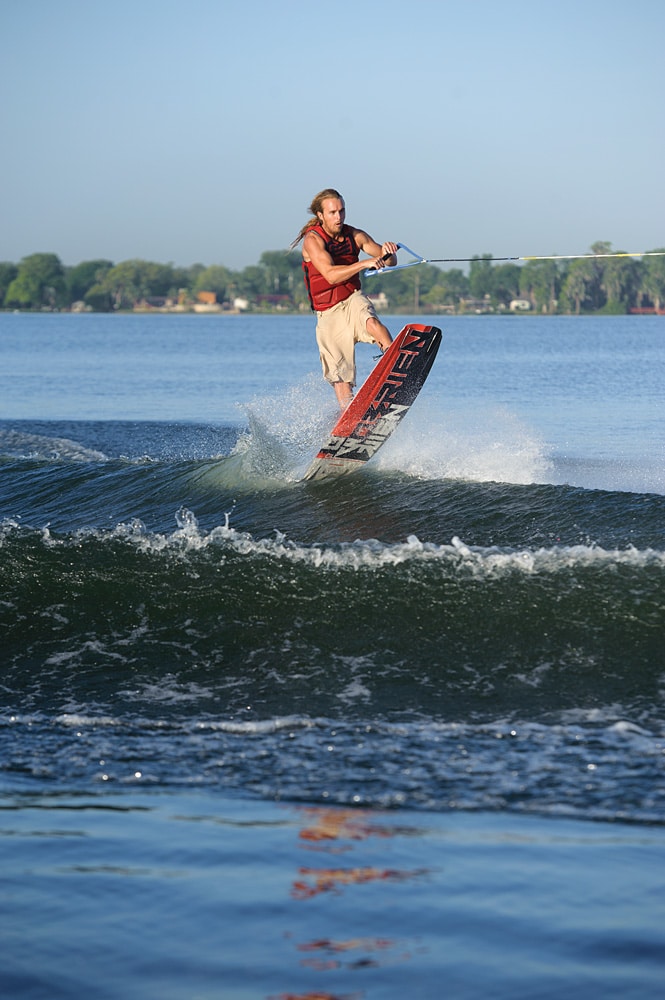
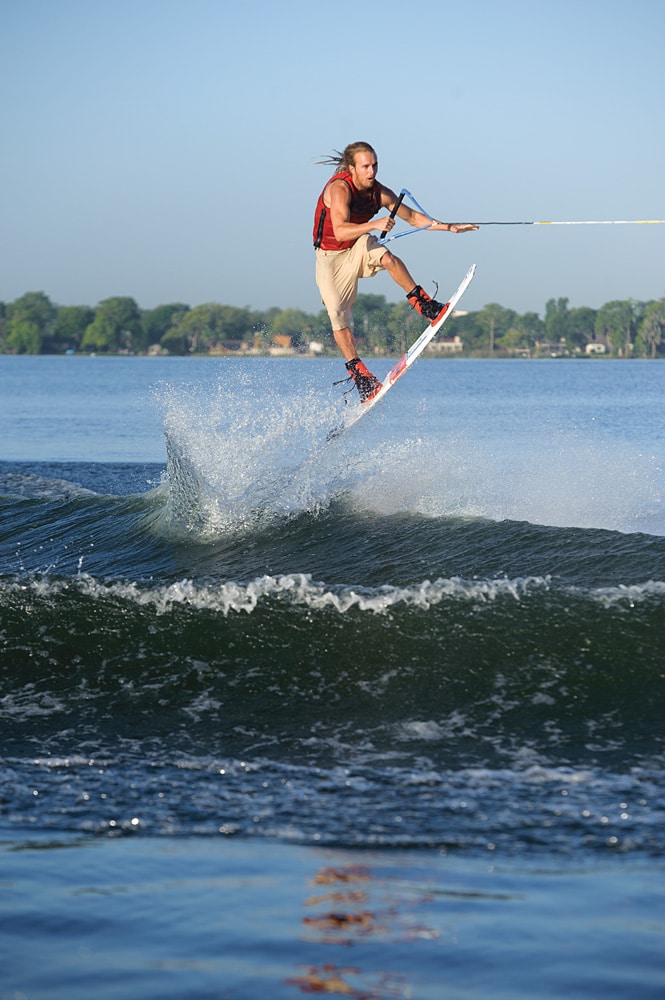
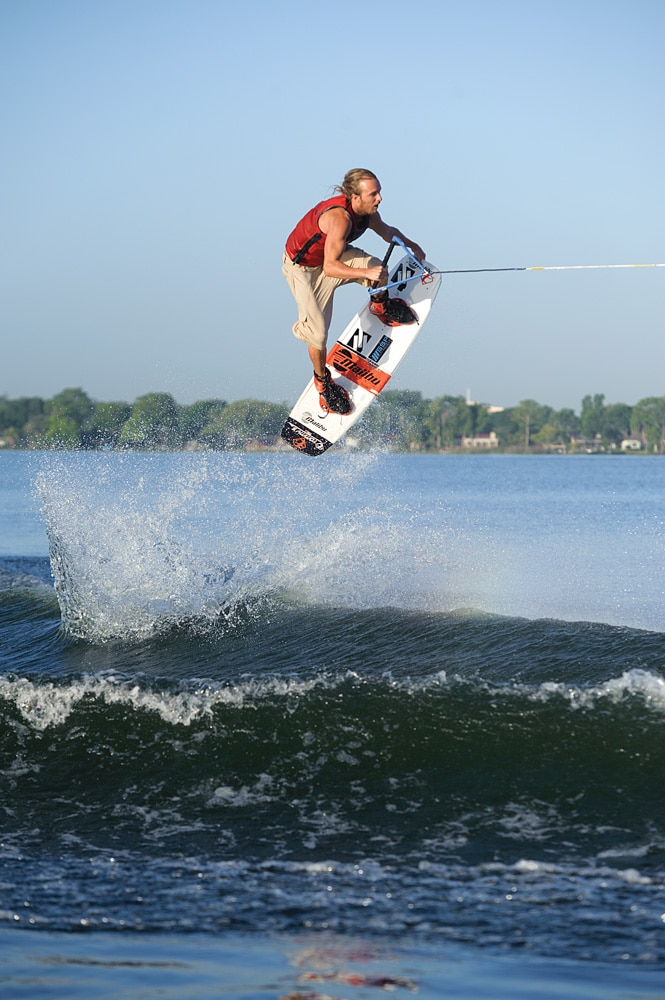
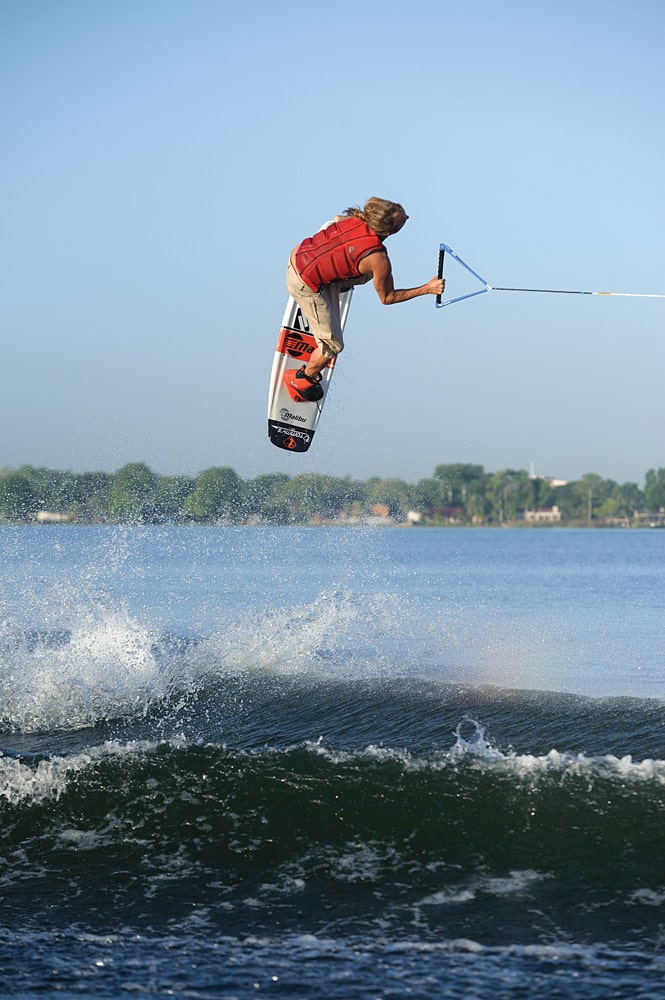
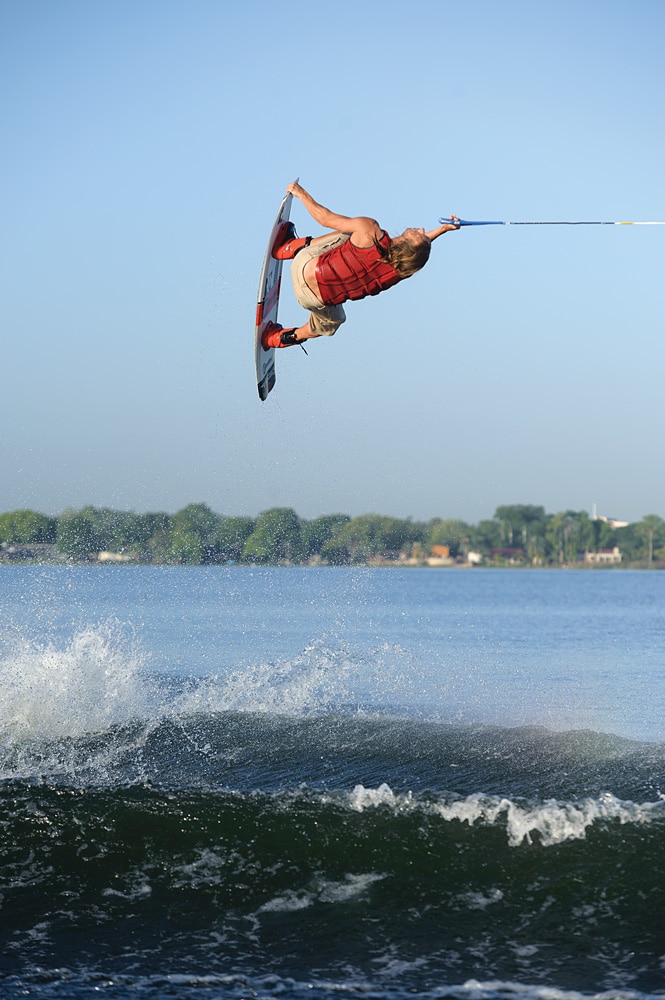
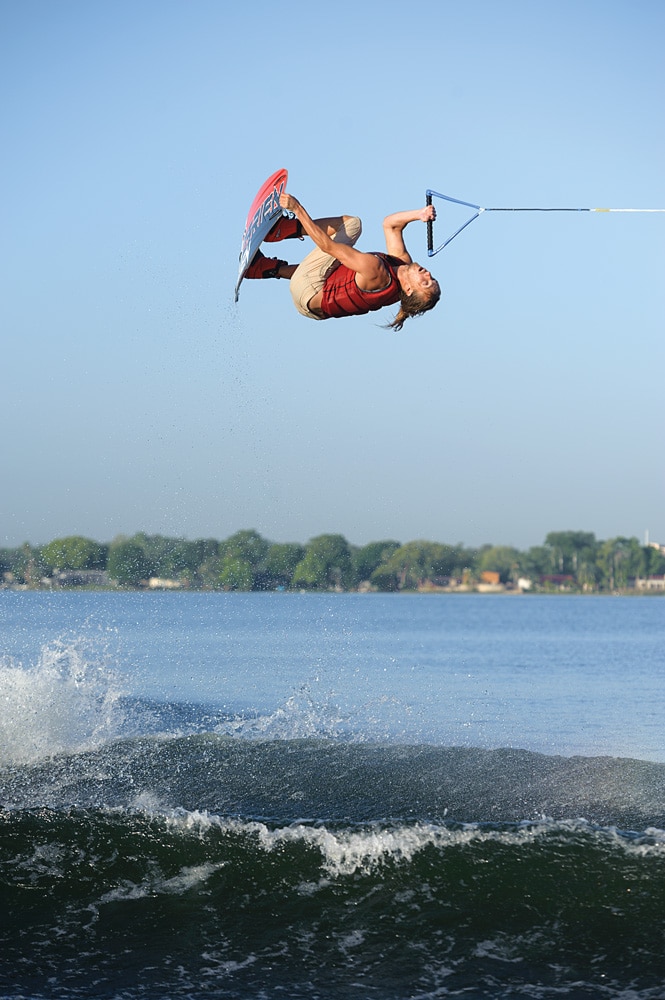
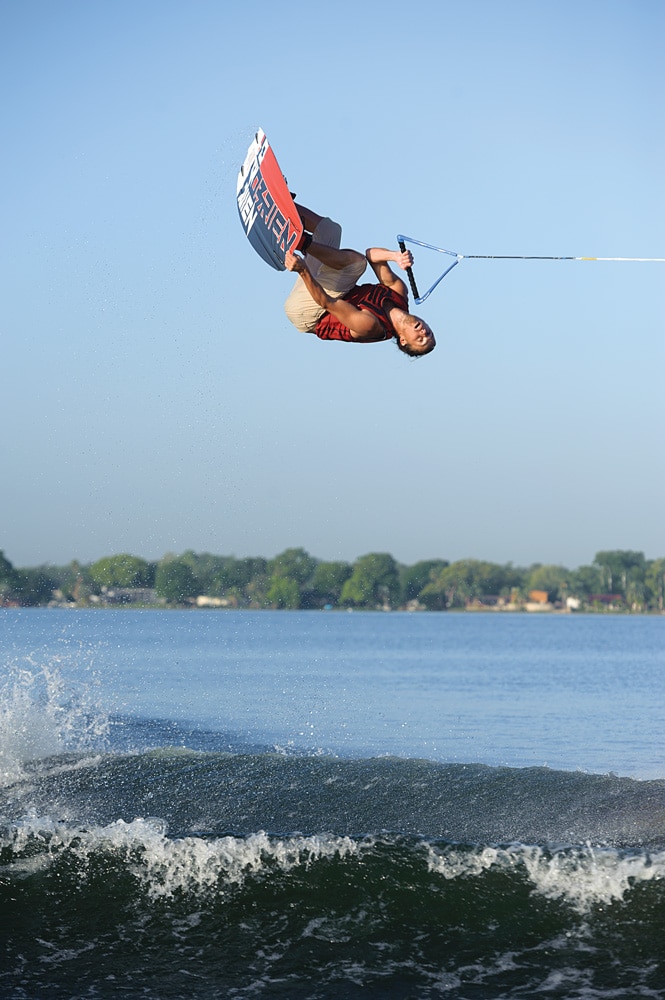
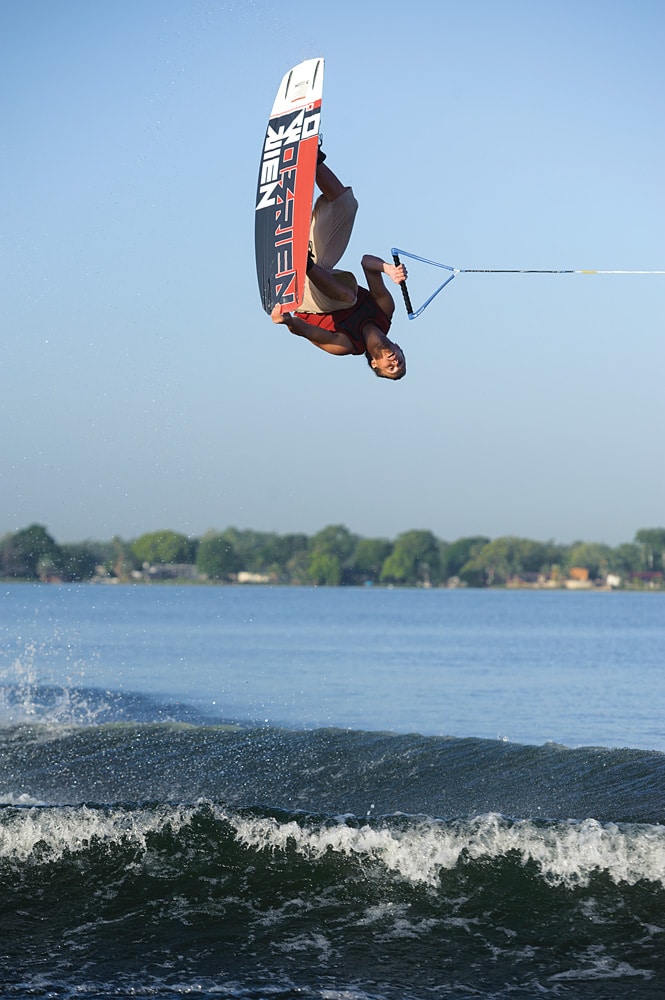
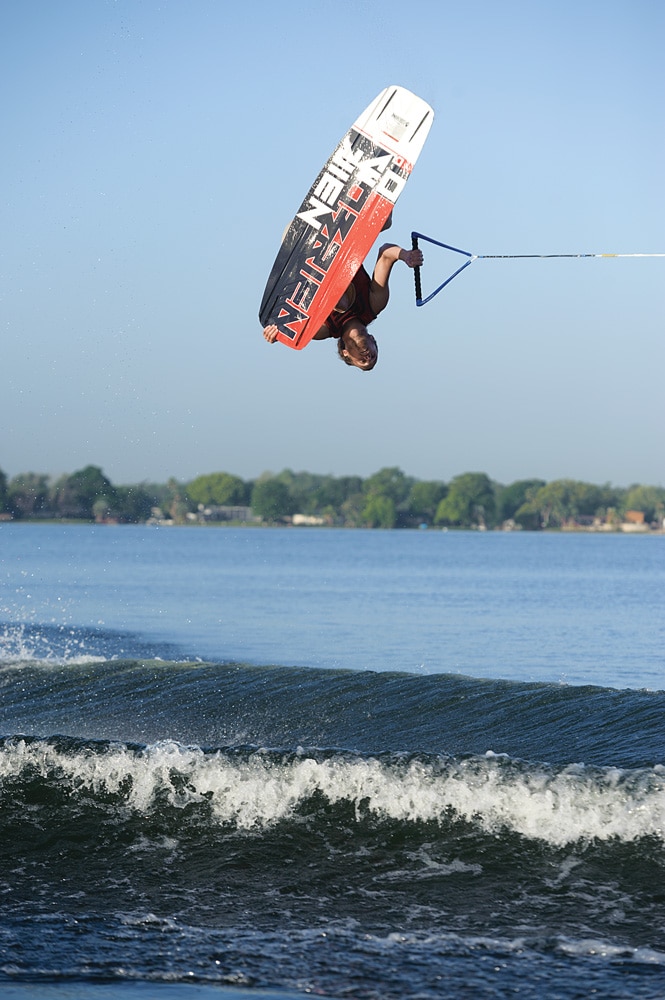
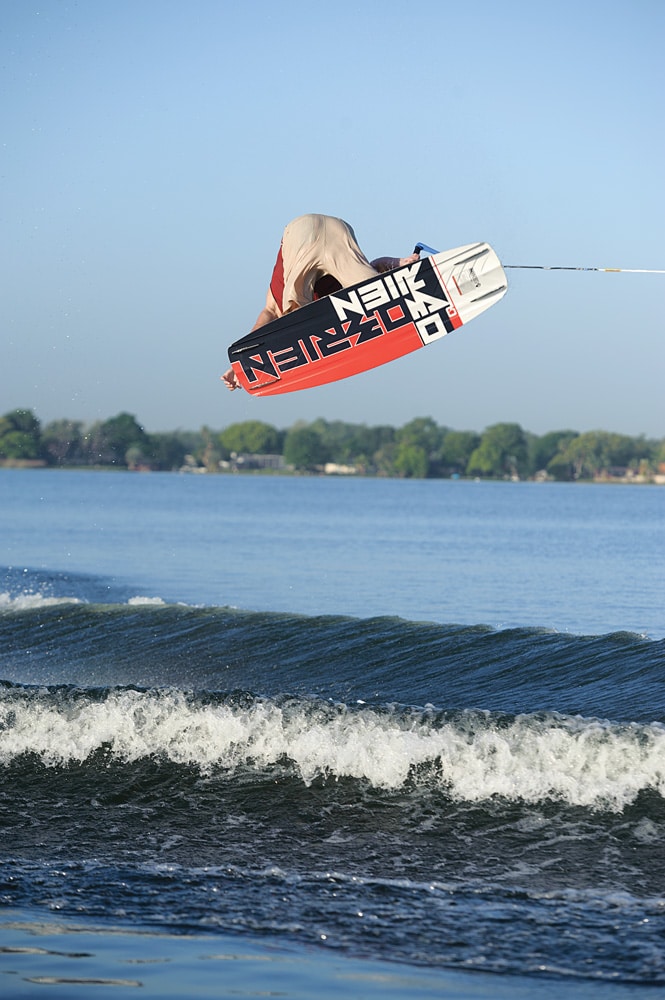
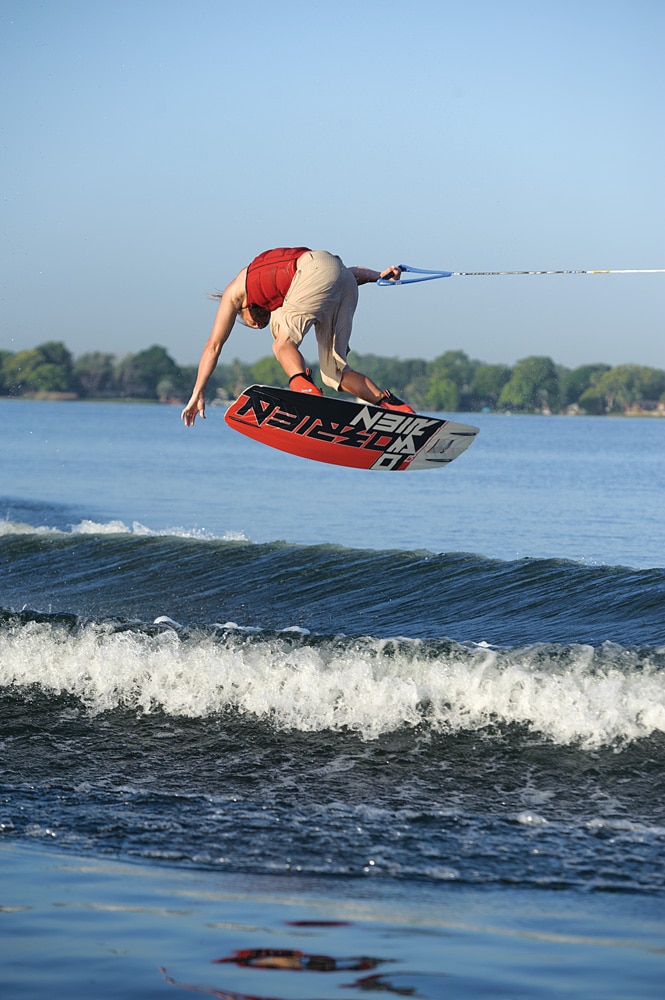
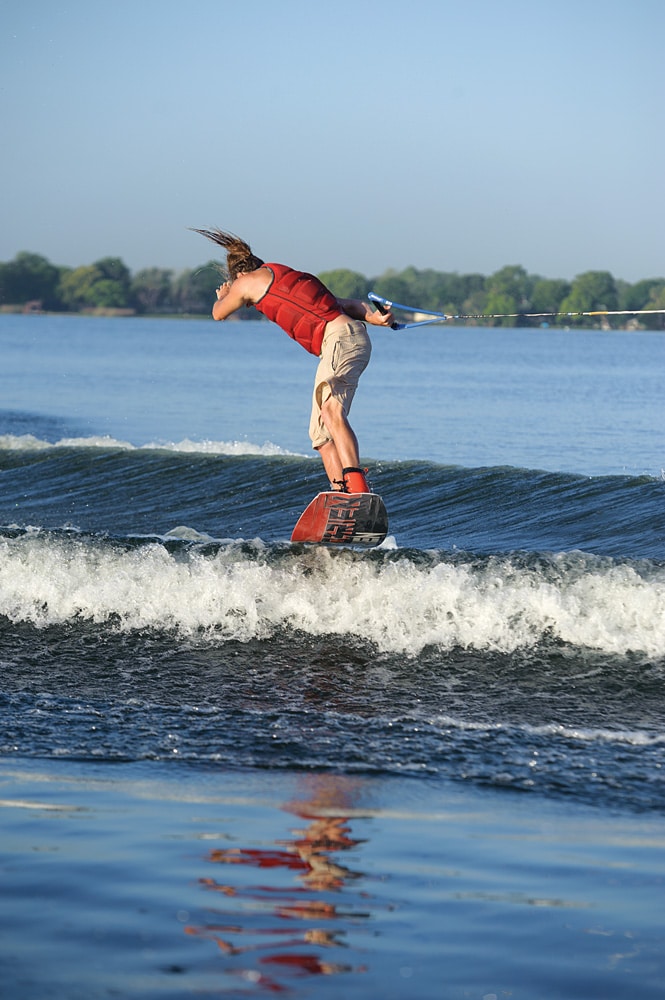
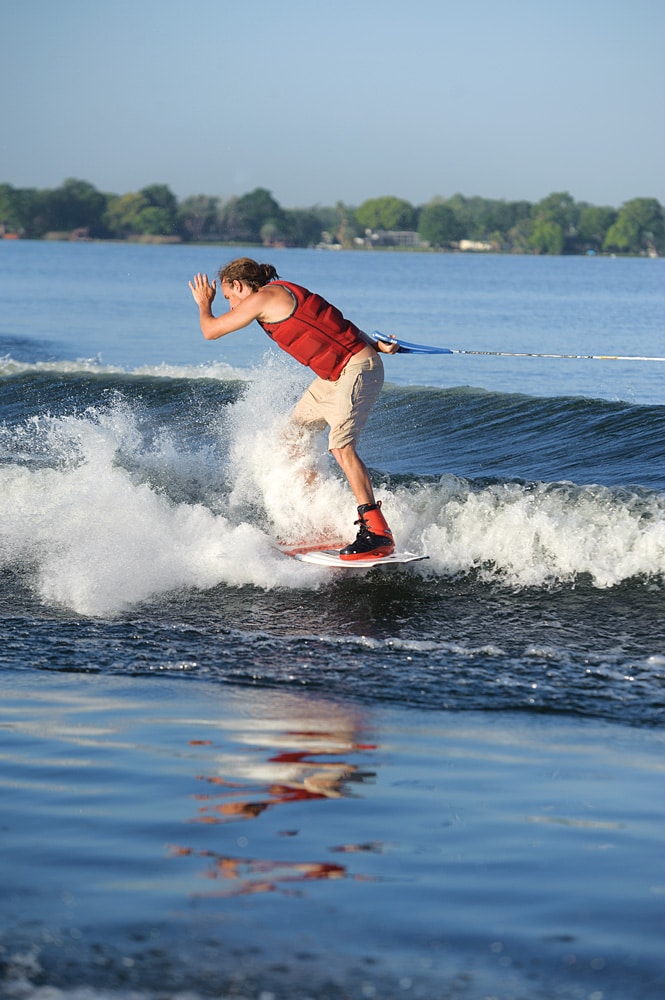
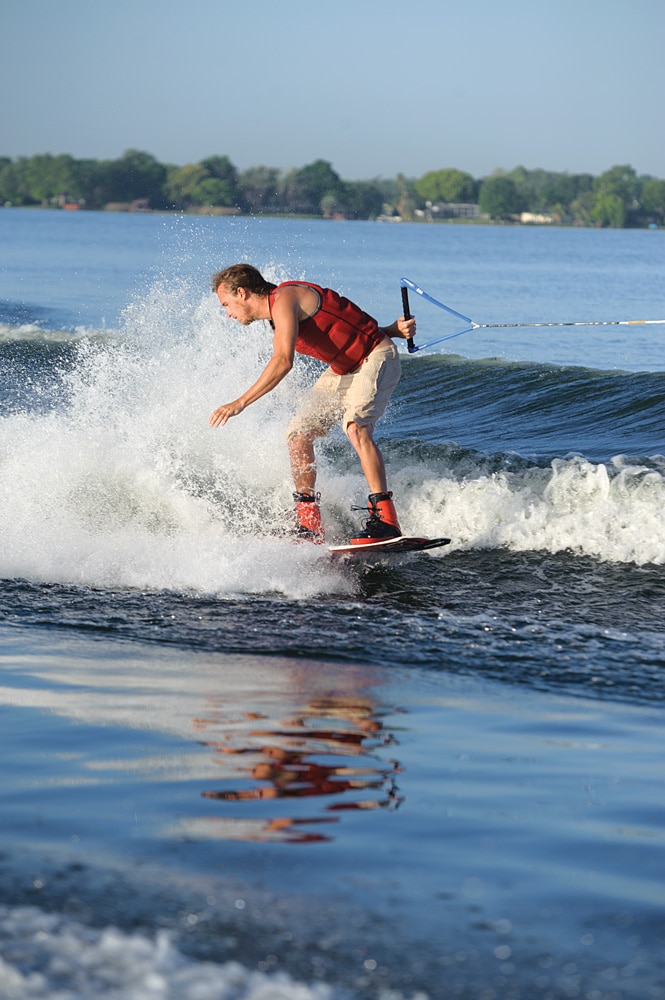
Crow Mobe
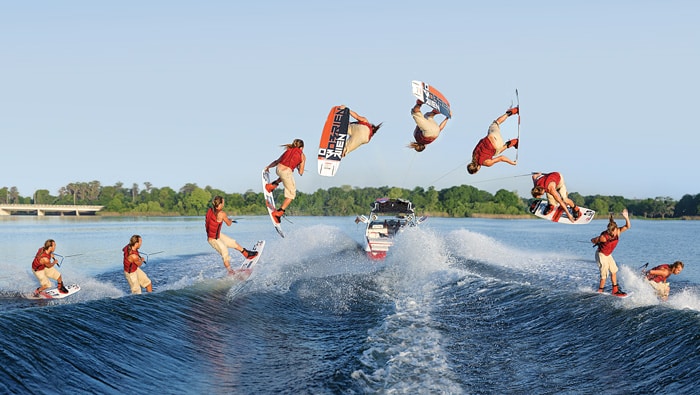
So you think you’re ready for your first mobe? If you answered yes, then you’re in luck, because we’ve got a killer crow mobe instructional lined up for you. Why break your mobe barrier with the crow mobe, you ask? The answer is simple: because you don’t have to pass the handle in the air, and we know how consistent your scarecrows are these days — or at least they should be if you’re thinking about taking them to mobe.
Before we hit the water, let’s dive straight into some mobe mechanics. Every trick can be broken down into smaller pieces. In every 360 flip, there’s a base invert and a 360 that are blended together. In the crow mobe’s case, it’s a toeside front roll with a toeside frontside 360.
Let’s separate the flip from the spin for a moment. The toeside frontside 360 is comprised of five tricks total. If we include the straight-airs involved in the takeoffs and landings, we are left with this chronological list: a toeside wake jump, a toeside frontside 180, a switch heelside wake jump, a switch heelside backside 180, and the goal trick, a toeside frontside 360.
Now that you understand all of the takeoff and landing positions inside of this 360, let’s start blending the flip into it. If you add the lateral flipping direction of the toeside front roll to each of those 180s and edging positions, you are left with this list: toeside front roll, scarecrow, switch heelside front flip, switch heelside front flip to blind, and finally, the crow mobe.
Visualizing all of the tricks in this list from a first-person perspective will help you grasp the physics and, in turn, expedite the learning process. Take that list of ten tricks, write them all down on paper, and check off all of the ones you’ve landed before. Now, we know what you’re thinking — we’re not suggesting that you learn a switch front to blind before you start trying your crow mobes. But at least you can see how all of these tricks overlap, and the remaining unchecked tricks in your list will highlight your weaknesses, giving you a starting point.

How To: Land Your First Mobe | Words: Brandon Judd | Photos: Bill Doster
Flatten It Out
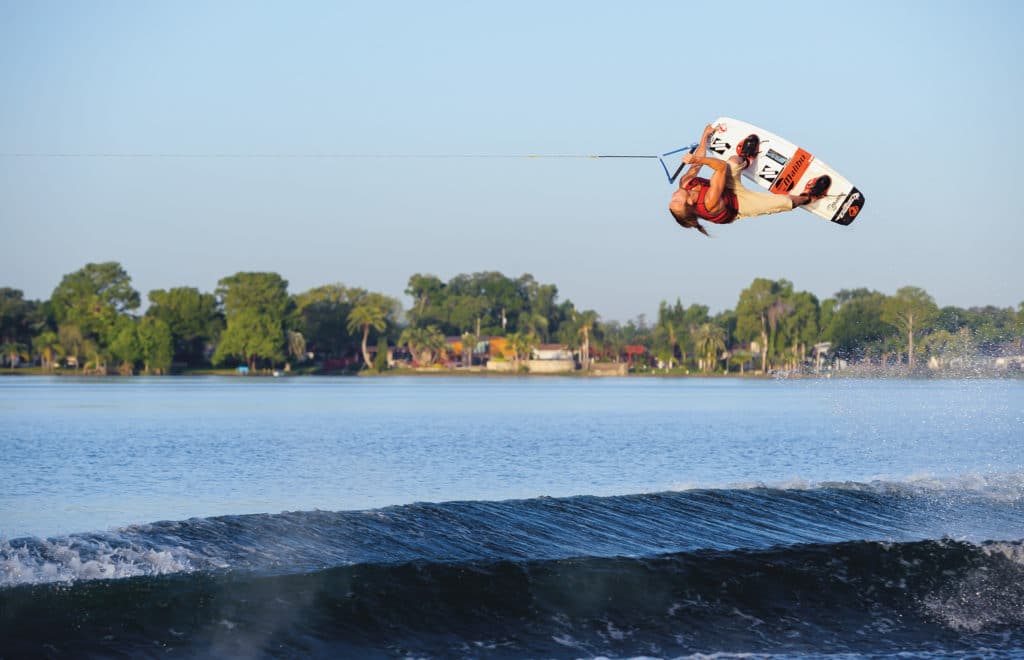
Fortunately for you, we’ve looped in Jeff Langley for some stylish, technically sound visual aids and firsthand crow mobe experience. This trick is so consistent for Jeff that when we shot these photos, he did at least 30 in a row without falling so we could show it to you at every angle. So if you’re looking for someone’s crow mobe to mimic, Jeff’s your guy.
One major prerequisite to the crow mobe is preparing your scarecrow with a flatter, less “flippy” axis. This allows you to add more spinning rotation without unintentionally overrotating the flip. The more spin you add, the less upside down you need to flip, leaving your body more horizontal in the air — similar to how Jeff is positioned in this photo. Jeff points out, “To do this, you have to change the way you initiate your flip. Instead of taking your head and shoulders over the nose of your board across the wake, roll your back shoulder toward the boat and rotate your head around the handle.”
One way to confirm that your crow is flat enough to take to mobe is to add a front hand grab to it, preferably melon or nose. “This axis change is also going to help you grab it if you roll into the crow rather than flip end over end into the crow. I try not to flip until I get to my peak in the air. Waiting to flip allows me to get the grab on the way up, instead of initiating the flip at the wake and chasing the grab all the way through the rotation,” says Jeff. “It can be the hardest thing to learn how to grab your inverts, but if you think about initiating the flip with your lower body and waiting to flip until you get the grab, it will be more controlled and efficient.”

How To: Land Your First Mobe | Words: Brandon Judd | Photos: Bill Doster
Know the Tempo
Now that your scarecrow is adequately flattened out, let’s talk about how and when to add that last 180. The tempo is more of a scarecrow plus a switch heelside backside 180, than it is a toeside front roll with a toeside frontside 360. The key is to find the rhythm in this trick. When it’s done correctly, you should feel a distinct pause point as you spot the water just before the landing. “Nothing changes from scarecrow to crow mobe until the crow is finished. It is at that point that you know if you are going to add the backside 180 or stop at crow,” says Jeff. “If the takeoff felt good, then start to rotate your back hip around toward the boat, and push the handle behind you to get into the blind position.”
Implementing this is easier said than done, but if you learn to recognize this pause point in the tempo, then you’ll gain enough confidence to start giving these a go. Jeff says, “Like with most tricks, the tempo is a lot slower than most of us think — especially as the wakes get bigger and bigger. It’s natural to think that if you have to add a 180 to a trick, then you have to spin earlier or faster, but it is really the opposite. You have to wait later, allowing for more pop and more time to spin. It is a daily struggle for all of us, beginner to pro. The more control you have of your tempo, the faster you are going to learn new tricks.”

How To: Land Your First Mobe | Words: Brandon Judd | Photos: Bill Doster
Stick the Landing
Toeside Frontside 360 / Crow Mobe Landing comparison:
**
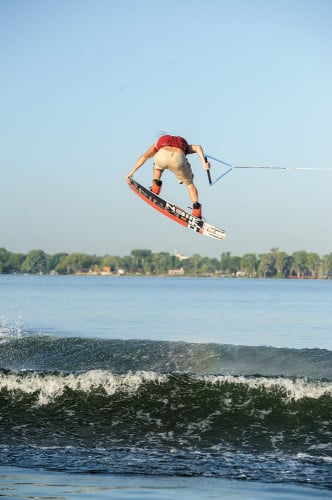
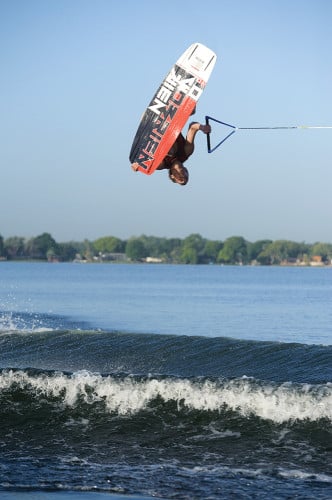
**
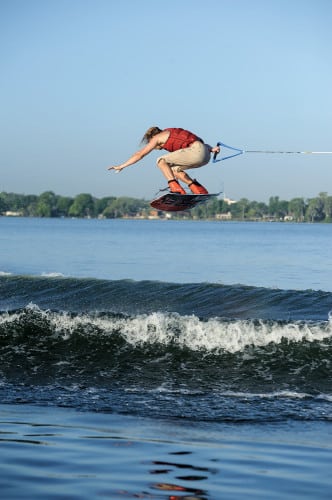
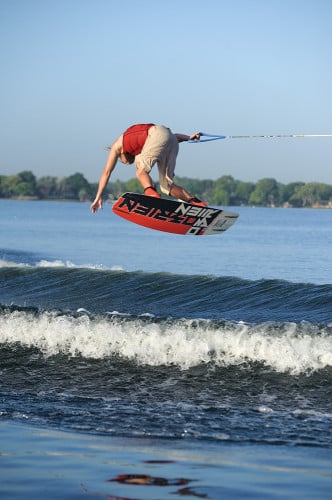
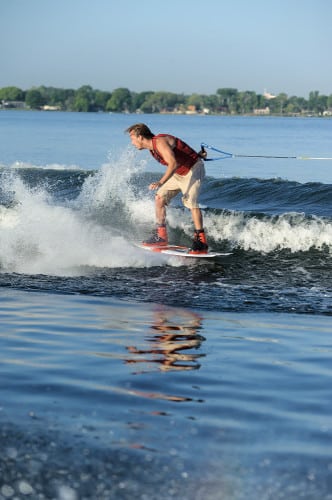
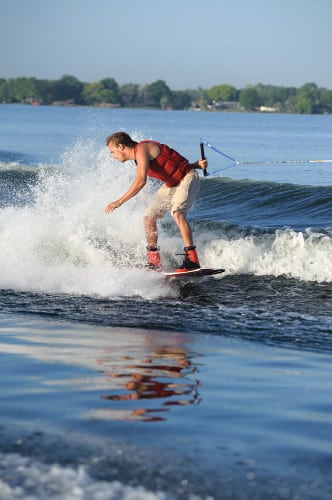
Your consistent, successful execution of this trick will greatly depend on your ability to impact the water in the blind landing position. After the initial impact, you can ride it out blind, get cuffed or pass the handle — whatever suits you. But it is important that you do impact the water in the blind position. To save you from some nasty back edges, the crow mobe should NOT be the first trick that you learn to land blind in.
The best way to check if your toeside blind landing position is ready for the crow mobe impact is to take a look at your toeside frontside 360 landing. Jeff says, “The toeside 360 has the exact same landing as the crow mobe, and has a lot of the same mechanics throughout the trick. If you do your toeside 360 correctly, you will naturally start to unwind the first 180 by the peak of the trick, spot your landing, and wait to drop slowly into the second 180 on the way down. This will prevent you from slipping out and landing on your butt in most cases. Making it very slow, smooth and controlled will help you become more aware of where you are versus where you need to be in the rotation to get the perfect landing. This blind landing is a huge stepping-stone for a lot of other tricks besides the crow mobe, so learn it! And learn it switch too!”
Now that your crow mobe mechanics are prepped, it’s time to take this to the water. To review: Make sure that your crows are flat and your toeside frontside 360 blind landings are solid. Then, if your scarecrow feels lofty and the pause point feels right, drop into the late switch heelside backside 180 on the way down, impacting the water in the blind position, and continue edging away from the wake to claim your first mobe!


